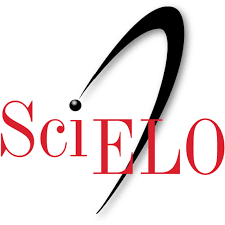Incorporation of calcium aluminate and zirconia in polymethylmethacrylate (PMMA) bone cement for biomedical applications: study of in vitro osteogenesis
DOI:
https://doi.org/10.4322/bds.2025.e4780Resumo
Objective: To evaluate the effects of incorporating calcium aluminate cement (CAC) and monoclinic zirconia (Z) into polymethylmethacrylate (PMMA) bone cement on in vitro osteogenesis. Material and Methods: Samples of pure PMMA, PMMA+CAC 7.5% (wt%) and PMMA+Z 7.5% (wt%) were prepared. The formulations were characterized by scanning electron microscopy, energy-dispersive spectroscopy, Fourier-transform infrared spectroscopy, and wettability analysis. For biological assessment, mesenchymal stem cells derived from Wistar rat femurs were cultured on the samples. Cellular response was analyzed by cell viability assay, protein synthesis, alkaline phosphatase (ALP) activity, tumor necrosis factor-alpha (TNF-α) expression by ELISA, and mineralized nodule formation. Results: All groups exhibited cell viability greater than 70% (p>0.05). ALP activity and protein synthesis showed no significant differences (p>0.05). TNF-α expression was significantly higher in the control group (41.25 ± 17.00 pg/mL) compared with PMMA (22.97 ± 7.08; p<0.01), PMMA+Z (25.76 ± 13.08; p<0.05), and PMMA+CAC (28.99 ± 14.71; p<0.05), suggesting inflammatory modulation. All groups presented mineralized nodules. In the wettability analysis, a numerical reduction in the contact angle was observed for PMMA+Z compared with pure PMMA, but without statistical significance (p>0.05). Conclusion: The addition of CAC and Z to PMMA resulted in more homogeneous surfaces, a trend toward increased wettability, and reduced TNF-α expression, without impairing cell viability or osteogenic potential, highlighting the promising potential of these formulations for bone regeneration.
KEYWORDS
Bone cement; Calcium aluminate; Osteogenesis; Polymethyl methacrylate; Zirconia.
Downloads
Downloads
Publicado
Como Citar
Edição
Seção
Licença
Copyright (c) 2025 Juliana dos Santos Lupp, Luis Augusto de Almeida-Silva, Nathalia de Souza Ramos , Ivone Regina de Oliveira , Felipe Eduardo de Oliveira , Sarah de Oliveira Marco Avelino , Isabela dos Santos Gonçalves , Luana Marotta Reis de Vaconcellos

Este trabalho está licenciado sob uma licença Creative Commons Attribution 4.0 International License.
TRANSFERÊNCIA DE DIREITOS AUTORAIS E DECLARAÇÃO DE RESPONSABILIDADE
Toda a propriedade de direitos autorais do artigo "____________________________________________________________________" é transferido do autor(es) para a CIÊNCIA ODONTOLÓGICA BRASILEIRA, no caso do trabalho ser publicado. O artigo não foi publicado em outro lugar e não foi submetido simultaneamente para publicação em outra revista.
Vimos por meio deste, atestar que trabalho é original e não apresenta dados manipulados, fraude ou plágio. Fizemos contribuição científica significativa para o estudo e estamos cientes dos dados apresentados e de acordo com a versão final do artigo. Assumimos total responsabilidade pelos aspectos éticos do estudo.
Este texto deve ser impresso e assinado por todos os autores. A versão digitalizada deverá ser apresentada como arquivo suplementar durante o processo de submissão.



























